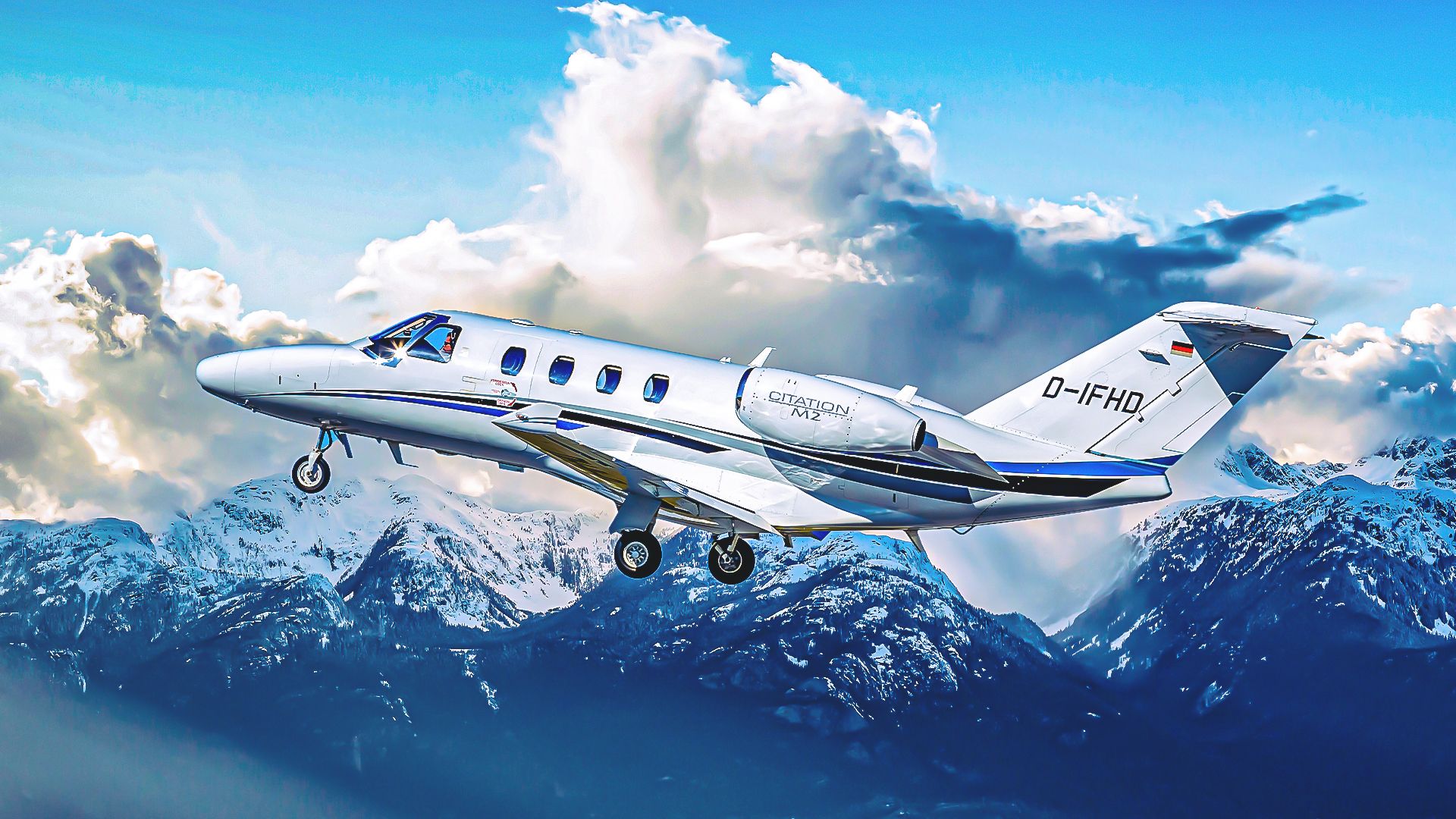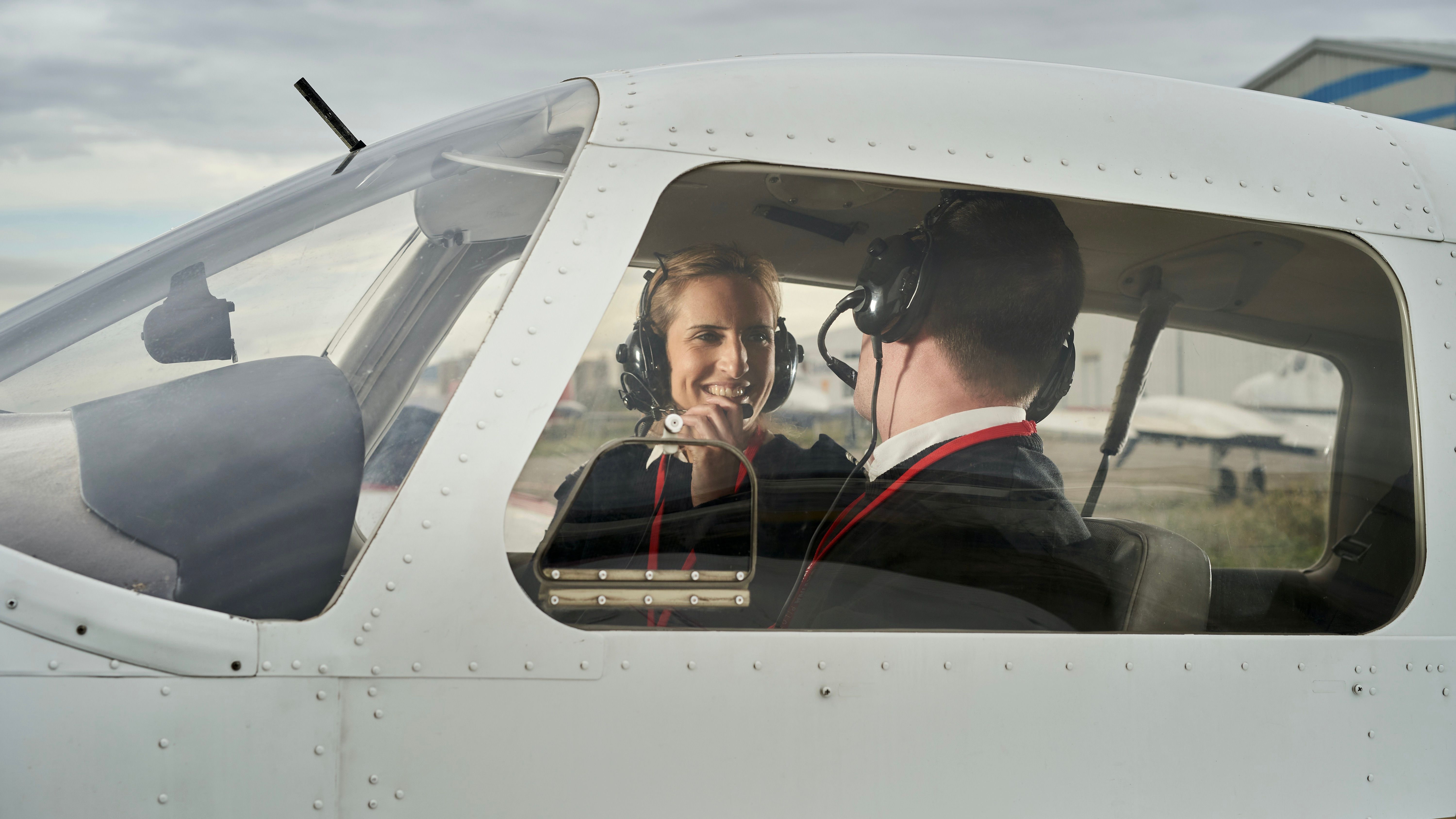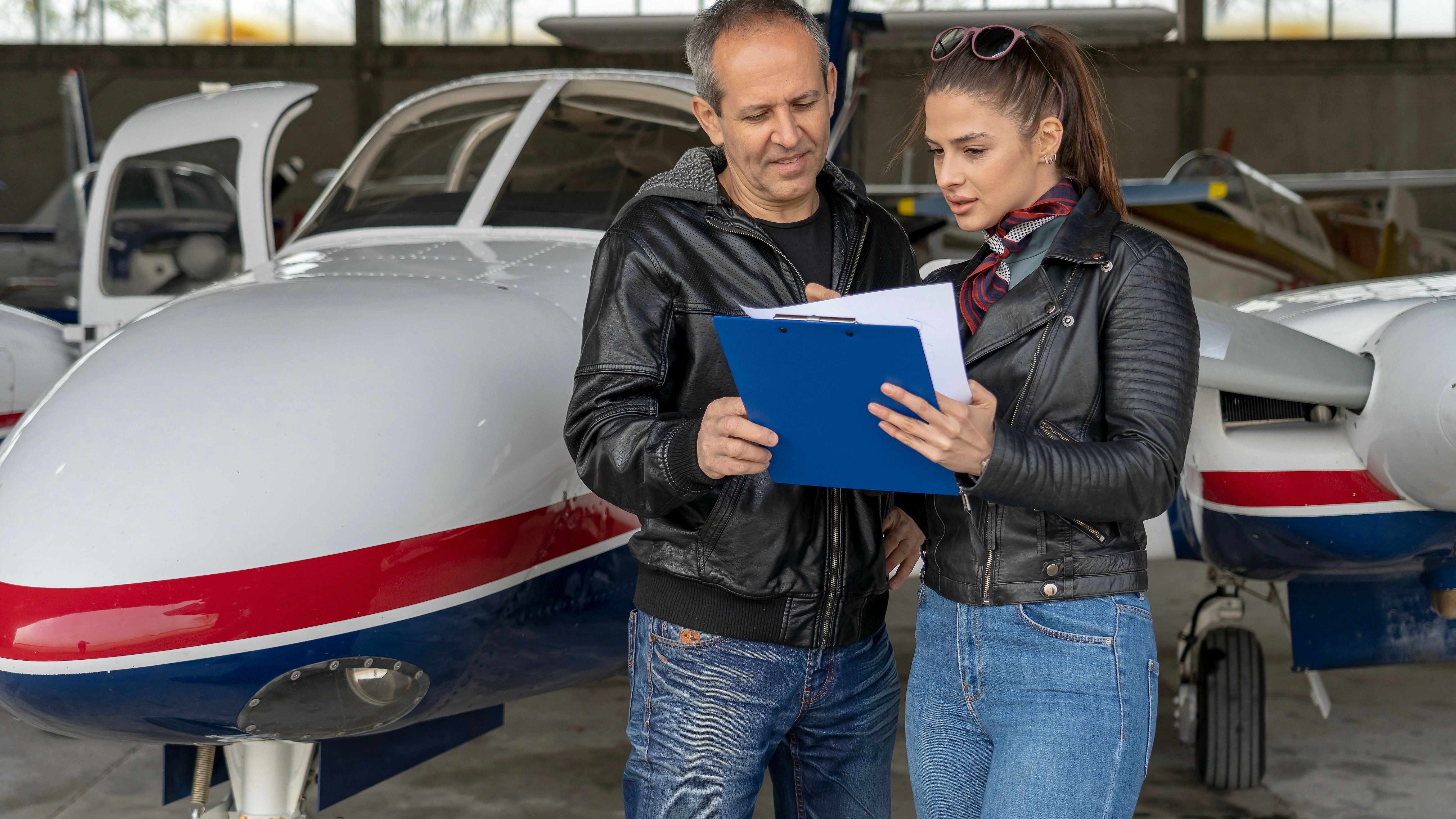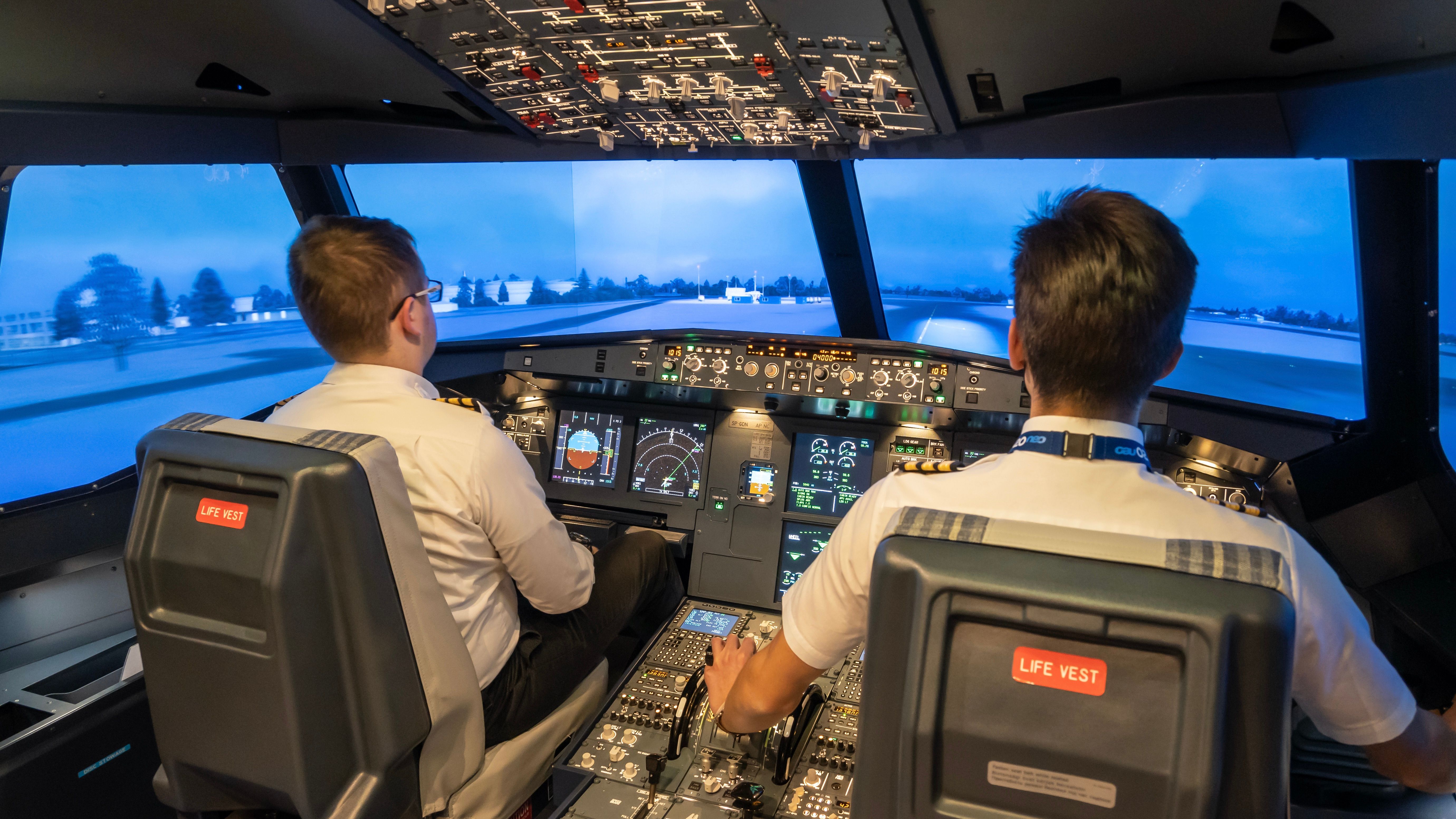Summary
- Private pilots need the PPL as the first step.
- Training includes ground school & flight hours, exams and checkrides.
- After PPL, consider instrument rating & multi-engine rating and endorsements to further your career.
It is a dream of many to fly an aircraft and become a pilot. It requires extensive training and is known to be an expensive endeavor but, what would you need to work on a private jet in the US? Let’s take a look in more detail.
Photo: CarlosBarquero | Shutterstock
The private pilot license (PPL) is the first thing that needs to be gained. It is a government-issued credential that shows that you can legally fly a private aircraft. But it is not that simple. To complete the licensing process, you need to complete more training, endorsements, and ratings. It is an important process with levels of regulation that ensure the safety of all those who operate and travel in aircraft.
The PPL requirements
The private pilot license, in basic terms, allows someone to fly in good weather conditions, operating a single-engine aircraft or multi-engine propeller aircraft.
Photo: RGtimeline | Shutterstock
The basic requirements are:
- A minimum of 16 years old to be able to fly solo and a minimum of 17 years old to gain the license.
- Must be able to read, write, and speak fluent English.
- Have a clear background check.
- Third-class medical certificate approved by FAA medical examiner.
What PPL training looks like
The student must attend around four weeks of ground school and pass the FAA written exam on completion. This is where you learn all the theories and techniques of how to fly an aircraft safely. Also covered are topics such as weather, aircraft systems, regulations and navigation. Forty hours of flight time must be completed and those should include solo time and dual time with a certified instructor. There must be a minimum of:
- Ten hours of solo time: where you will practice take-off and landing as well as the maneuvers learned in ground school. Within this, five hours of solo cross-country training must be completed for a distance of at least 50 nautical miles. Take-off and landing must also be performed at an airport with an operating control tower.
- 20 hours of dual time: this includes airport operations, cross-country flight training, night flying and simulated instrument meteorological conditions (IMC). You will also learn about emergency procedures and pre-flight and post-flight procedures.
Although the FAA only requires 40 hours in total for a private pilot license, many people take many more hours of training to become proficient. After the initial training in ground school and flight training, you are scheduled for a check-ride. This combines an oral test on the ground before the flight, where you can demonstrate your flying ability. After the PPL is approved, you can navigate using visual flight rules (VFR) and references seen outside of the aircraft.
What’s next?
After taking your PPL, you can take an instrument rating that allows you to fly by instrument flight rules (IFR) where you can fly when visibility is lower than what is required for VFR operations. When flying an aircraft, most operations apart from take-off and landing are above 18,000 feet, meaning sea level (MSL), where an instrument rating is needed. This training requires instrument operations and flying in cloud without visual references. There is a knowledge exam on completing the training and a check-ride.
Multi-engine rating
This training is necessary if you wish to fly as a career. A PPL allows you to operate a single-engine aircraft, but the multi-engine rating allows you to fly with two engines or more and operate safely if one engine malfunctions. There is no written exam, but an oral test and check-ride must be completed.
Photo: KenSoft TH | Shutterstock
Type rating
Type rating applies to specific jets and different manufacturers and models need different type ratings. Different training companies and aircraft operators have their own requirements for knowledge and experience of pilots for a type rating. However, a type rating check-ride will be assessed by airline transport pilot (ATP) standards.
Commercial Pilot License
The Commercial Pilot License (CPL) is an extension of the basic PPL, going into more precise and complex details of operations and maneuvers. A knowledge test and check-ride need to be completed. It allows pilots to fly commercially for a career but not for an airline. For that, a further Airline Transport Pilot License (ATPL) is needed.
Photo: Vivooo | Shutterstock
The minimum requirements to complete the CPL are:
- 250 hours of flight time including 100 on powered aircraft
- 100 hours as pilot in command
- 50 hours of cross-country flying
- 20 hours of formal training including instrument work
- 10 hours of solo flying including cross country and night flying.
Endorsements
Endorsements do not require tests or check-rides but are where you receive specialized training from a certified instructor. Once the pilot is proficient on the aircraft, they will be given an endorsement in their log book. The high-performance endorsement is required to operate an aircraft with an engine of over 200 horsepower.
The high-altitude endorsement is required to fly an aircraft over a ceiling of 25,000 feet, and training involves high-altitude aerodynamics, hypoxia, and oxygen systems. Flight time in a pressurized aircraft or a simulator that mimics these conditions should be logged.
The complex endorsement is common, too, and requires training in an aircraft that has adjustable flaps, a controllable pitch propeller, and retractable landing gear. No specific hours are required, but a pilot must log simulator time or flights and ground training for complex aircraft, and the instructor signs the logbook.
Airline Transport Pilots License?
Although many pilots do go on to take the ATPL and work as pilots for the airlines, there are other options, like flying freight, aerial firefighting, air ambulance, or private jets. There is no specific license for pilots on private jets, and operators will have their own requirements regarding type ratings and flight hours. However, the endorsements and ratings held will be key to flying a private jet, and a commercial pilot license is essential, although some operators will ask for ATPL, too.
Whatever you plan to fly, a fully certified and respected flight instructor is essential. Where possible, it is best to combine endorsements and ratings to make the process more efficient and less time-consuming. More type ratings can appeal to potential private jet operators and improve marketability, two or three are usually recommended.
Do you dream of becoming a pilot? Maybe you already have your PPL? Let us know by commenting below.





